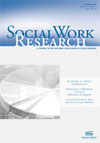 Photovoice is a qualitative community-based participatory research method that was first developed to assist rural Chinese women in documenting their everyday health and work conditions. Since its development in the mid-1990s, researchers have used photovoice to engage underserved communities of color who have been wary of research endeavors based on previous adverse experiences. With indigenous groups, photovoice has recently been used to document land and water resource management, food security, and health issues ranging from HIV to childhood obesity. Participants are given cameras and asked to take pictures that they feel correspond to or illustrate particular topics given by researchers.
Photovoice is a qualitative community-based participatory research method that was first developed to assist rural Chinese women in documenting their everyday health and work conditions. Since its development in the mid-1990s, researchers have used photovoice to engage underserved communities of color who have been wary of research endeavors based on previous adverse experiences. With indigenous groups, photovoice has recently been used to document land and water resource management, food security, and health issues ranging from HIV to childhood obesity. Participants are given cameras and asked to take pictures that they feel correspond to or illustrate particular topics given by researchers.
In a recent issue of the journal Social Work Research, published by NASW Press and Oxford, researchers reported on a study of tribal members from an American Indian community in the midwestern United States who used photovoice to document their perceptions and beliefs about water and health on their reservation. Their study infused photovoice’s seminal theoretical influences within an environmental justice framework to explore the impact of environmental changes in water on human health and well-being. Study participants included two men and nine women who self-identified as tribal members and either worked or lived (or both) on their tribe’s reservation.
During the photovoice project, participants took photographs and engaged in face-to-face interviews using the SHOWeD technique to reflect on the images they had captured. An In Vivo coding method was used to code the data using participants’ own words, followed by a thematic analysis to contextualize the codes within the cultural realities of the tribal community. Study findings detail how water is fundamental to the lives of the AI study participants and expose the scope of health concerns they have related to water circumstances on their reservation. The article concluded with a discussion about the use of photovoice with American Indian communities and implications of using the method for social work practice and research.
***
The journal Social Work is a benefit of NASW membership. It is available online or, at a member’s request, in print. Children & Schools, Health & Social Work and Social Work Research are available by subscription at a discounted rate for NASW members, either online or in print. You can find out more about the journals and subscriptions at this link.



